
The Simpsons: Road Rage is a 2001 video game based on the animated television series The Simpsons, and is part of a series of games based on the show. It was released for PlayStation 2, Xbox and GameCube. A Game Boy Advance version was released in 2003.

Sonic Adventure is a 1998 platform game developed by Sonic Team and published by Sega for the Dreamcast. It was the first main Sonic the Hedgehog game to feature 3D gameplay. It follows Sonic the Hedgehog, Miles "Tails" Prower, Knuckles the Echidna, Amy Rose, Big the Cat, and E-102 Gamma in their quests to collect the Chaos Emeralds and stop Doctor Robotnik from unleashing Chaos, an ancient evil. Controlling one of the six characters—each with their own abilities—players complete levels to progress the story. Sonic Adventure retains many elements from prior Sonic games, such as power-ups and the ring-based health system. Players can play minigames such as racing and interact with Chao, a virtual pet.

Phantasy Star Online is an online role-playing game (RPG) developed by Sonic Team and published by Sega in 2000 for the Dreamcast. It was the first online RPG for game consoles; players adventure with up to three others over the internet to complete quests, collect items and fight enemies in real-time action RPG combat. The story is unrelated to previous games in the Phantasy Star series.
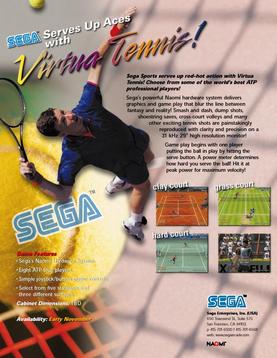
Virtua Tennis, known in Japan as Power Smash, is a 1999 tennis arcade game created by Sega AM3. The player competes through tennis tournaments in an arcade mode. It was ported to the Dreamcast in 2000, and to Windows in 2002. A Game Boy Advance version was also released in 2002, followed by an N-Gage version in 2003. For the home console market, the game was expanded with the introduction of the campaign mode.
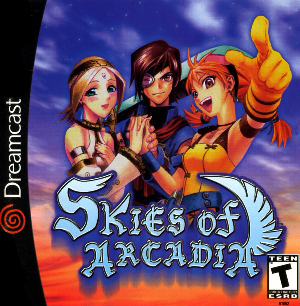
Skies of Arcadia is a 2000 Dreamcast role-playing video game developed by Overworks and published by Sega. Players control Vyse, a young air pirate, and his friends as they attempt to stop the Valuan Empire from reviving ancient weapons with the potential to destroy the world.

Shenmue II is a 2001 action-adventure game developed by Sega AM2 and published by Sega for the Dreamcast. It was directed, produced and written by Yu Suzuki. Like the original Shenmue (1999), Shenmue II consists of open-world environments, brawler battles and quick-time events. It features a day-and-night system, variable weather effects, non-player characters with daily schedules, and various minigames. The player controls the teenage martial artist Ryo Hazuki as he arrives in Hong Kong in 1987 in pursuit of his father's killer. His journey takes him to Kowloon and the mountains of Guilin, where he meets a girl who is part of his destiny.

18 Wheeler: American Pro Trucker, known in Japan as 18 Wheeler, is an arcade game developed by Sega AM2 and distributed by Sega. The game was released in arcades in 2000 and ported to the Dreamcast in 2001. It was released for the PlayStation 2 in 2001 and GameCube in 2002 by Acclaim Entertainment. Sega followed up on the success of 18 Wheeler with a sequel, The King of Route 66, which was released in the arcades in 2002 and ported to the PlayStation 2. This was one of the final arcade games to be ported to the Dreamcast after its discontinuation, before Sega became a third-party developer.
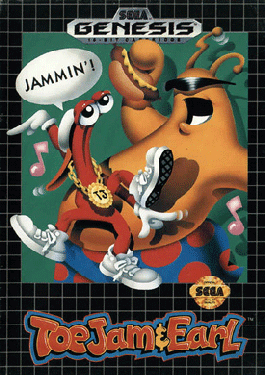
ToeJam & Earl is an action game developed by Johnson Voorsanger Productions and published by Sega for the Genesis console. Released in 1991, it centers on ToeJam and Earl—alien rappers who have crash-landed on Earth. As they attempt to escape the planet, players assume the role of either character and collect pieces of their wrecked spacecraft. It references and parodies 1980s and early 90s urban culture and is set to a funk soundtrack. ToeJam & Earl's design was heavily influenced by the role-playing video game Rogue (1980) and derived various features from the game, such as the random generation of levels and items. As such, ToeJam & Earl is often considered to be an example of a roguelike game.

NFL 2K2 is a video game released in 2001 for Dreamcast by Sega, and developed by Visual Concepts. It is the last game for the Sega Dreamcast in the series after being discontinued before Sega shifted to a third party publisher. Due to that, it was released later for PlayStation 2 and Xbox. It is the first Xbox game published by Sega. It is also the last game in the NFL 2K series to feature Randy Moss as a cover athlete.

Armada is a video game developed and published by Metro3D. It was released for the Sega Dreamcast in North America on November 26, 1999. Armada is a shooter role-playing game (RPG) that allows up to four players to fly about the universe, fighting the enemy, performing missions and improving their ship.

Sega Soccer Slam, also known as simply Soccer Slam, is a sports game released for GameCube, Xbox, and PlayStation 2 in 2002.

Cyber Troopers Virtual-On Oratorio Tangram is a 1998 Japanese Sega Model 3 arcade action game that was later ported to the Sega NAOMI arcades and the Dreamcast home console in Japan in 1999 and North America in 2000. Oratorio Tangram is a 3D fighting game where the player assumes control of a giant humanoid robot, and is a sequel to the 1996 video game Virtual On: Cyber Troopers. A re-release of the game, entitled Virtual-On Oratorio Tangram Ver.5.66, was released worldwide for Xbox 360 on April 29, 2009.
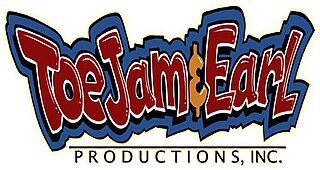
ToeJam & Earl Productions, Inc. (1989–2003) was an American video game company founded by Electronic Arts developers Mark Voorsanger and Greg Johnson. Their best-known titles were Orly's Draw-A-Story, and three games in the ToeJam & Earl series.

World Series Baseball 2K2, or World Series Baseball as it is known for Xbox, is a sports game developed by Visual Concepts and published by Sega for the Dreamcast and Xbox. It is the first game in the modern series to be featured on the Xbox and the first title in the series developed by Visual Concepts. It is the successor to the World Series Baseball series for the Sega Genesis, Sega Saturn, and Dreamcast. It was released in 2001 to coincide with the beginning of the 2002 baseball season.
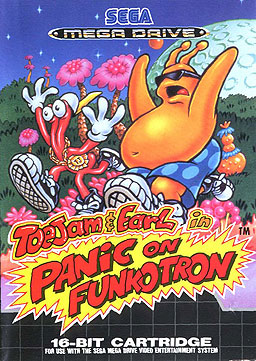
ToeJam & Earl in Panic on Funkotron is a platform video game developed by Johnson Voorsanger Productions and published by Sega in 1993 for the Sega Genesis. The game is the sequel to cult video game ToeJam & Earl, released in 1991. The game concerns two alien protagonists, ToeJam and Earl, both of whom have escaped from Earth, where they had crash landed. After returning to their home planet of Funkotron, the duo discover a number of antagonistic Earthlings have stowed away on the spacecraft and are wreaking havoc across the planet. The player must hunt down these Earthlings and imprison them in jars before sending them back to Earth.

Panzer Dragoon is a series of video games developed by Sega. The first three games—Panzer Dragoon (1995), Panzer Dragoon II Zwei (1996), and Panzer Dragoon Saga (1998)—were produced by Sega's Team Andromeda for the Sega Saturn. The fourth, Panzer Dragoon Orta (2002), was developed by Sega's Smilebit team for the Xbox. Spin-offs include Panzer Dragoon Mini (1996) for the handheld Game Gear in Japan. A remake of Panzer Dragoon was released in 2020.
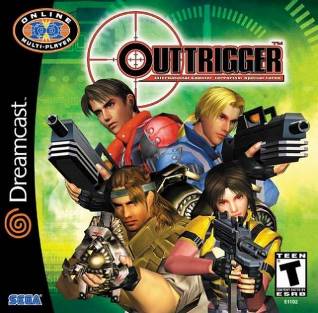
Outtrigger is a first/third-person shooter video game developed by Sega AM2 for the Sega NAOMI arcade cabinet and the Dreamcast. The game was originally released in 1999 for the arcades and was later ported over to the Dreamcast in 2001. The player character of Outtrigger is a member of an anti-terrorist group, and can be chosen between default characters with different specialties or a custom character, and can utilize a number of power-ups. Reception to Outtrigger was generally positive, praising the gameplay and mechanics, though criticizing the removal of online play in the European version of the game.

Sonic & Sega All-Stars Racing is a 2010 kart racing video game developed by Sumo Digital and published by Sega. It was released for Wii, Xbox 360, PlayStation 3, Nintendo DS, and Windows, featuring characters from multiple Sega franchises. The game is the third title in the Sega All-Stars series, preceded by Sega Superstars Tennis. A mobile version was developed by Gameloft, and released for iOS in June 2011, as a paid download. A version for OS X was released by Feral Interactive in April 2013.
Greg Johnson is an American video game designer known for the ToeJam & Earl and Starflight games. He has worked for Binary Systems and Electronic Arts and co-founded ToeJam & Earl Productions with Mark Voorsange. In 2006, he founded HumaNature Studios. His game credits include Orly's Draw-A-Story (1997), Kung Fu Panda World (2010), and Doki-Doki Universe (2013).
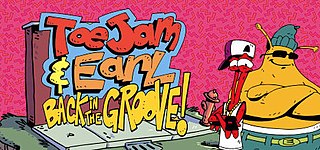
ToeJam & Earl: Back in the Groove is the fourth entry in the ToeJam & Earl series of video games. The game was developed by HumaNature Studios, founded by series creator Greg Johnson, and published by the studio on March 1, 2019.



















